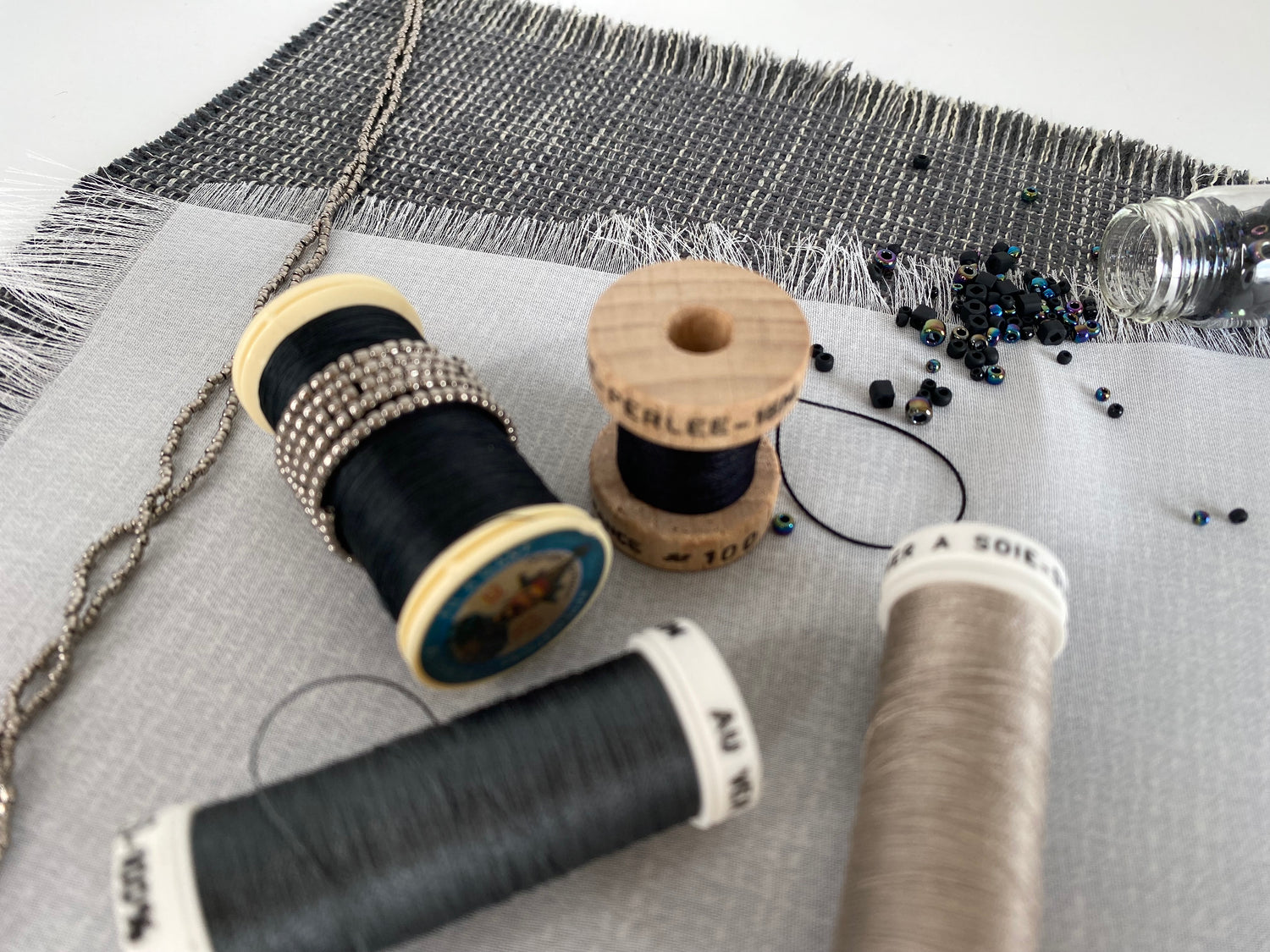
The Fabric
Selection and preparation
The selection and preparation of the fabric is extremely important to achieve the final result that we imagine for our embroidery. I particularly prefer natural fiber fabrics, mainly cotton, linen and silk. I avoid synthetic fabrics as much as possible and I almost never embroider on stretchy fabrics.
The three main factors that I think you should consider are the design of your embroidery, the techniques that you are going to use and the materials that you have chosen for your project. I'll explain:
If your design has many small details, it is better to work on a fabric that does not have a lot of texture, because for these details to be noticed you will want to use a fine thread and if the fabric is hyper-textured, the thread will be lost in it. On the other hand, there is the transfer that is easier on smooth fabrics for very small details. If you are thinking rather of an embroidery of large flowers, for example with wool or the 6 strands of the skein of cotton thread, there will be no problem if you do it on a sweater. This also works the other way around, if I want to embroider a sweater then I have to think of a design that I can transfer and embroider on this medium so that the result is pretty too.
Regarding the techniques that you are going to use, you should consider the type of frame; if you are going to work with a traditional needle or if you are going to also use the luneville crochet. If you are going to work with luneville and you do not have much experience with the technique, it is best to use silk organza since, being translucent, it will allow you to see what you are working on and it is also quite resistant. However, silk organza is not the only fabric that allows the luneville crochet. I have embroidered in silk shantung that is absolutely opaque and I have achieved good results, it just takes a lot of practice. If you are going to work with a traditional needle then you can use a much greater variety of fabrics without fear of problems.

We it comes to choosing the materials, it is important to bear in mind that different materials will pose unique challenges. For example, when using 15/0 beads (one of the smallest there is) you will not be able to make a well defined straight line on a fabric with a lot of texture. On the other hand, if you are going to use large beads as a complement of an embroidery with threads you should not have problems working it on a jute.
Once the fabric is selected, we must worry about its preparation to be able to embroider it without problems. Basically we must take care of two things, if the fabric could shrink, for example cotton or linen, you must first wash it (without wrinkling it in the process) with very hot water and then cold, a couple of times at least, so that the shrinking process is done before starting to embroider. I also recommend ironing it wet so that they are perfectly smooth. Also you must make sure is that your fabric is straight, or in other words, it is not cut on the bias; you must embroider in the straight direction of the fabric thread so that it does not twist once the work is finished. Lastly, always iron your fabric before you place it on your hoop for embroidery.

I hope I have helped you solve some doubts you may have had regarding the selection and preparation of the fabrics for your embroidery. If you have any questions let me know in the comments so I can help you. May you be well and happy embroidery!



Leave a comment